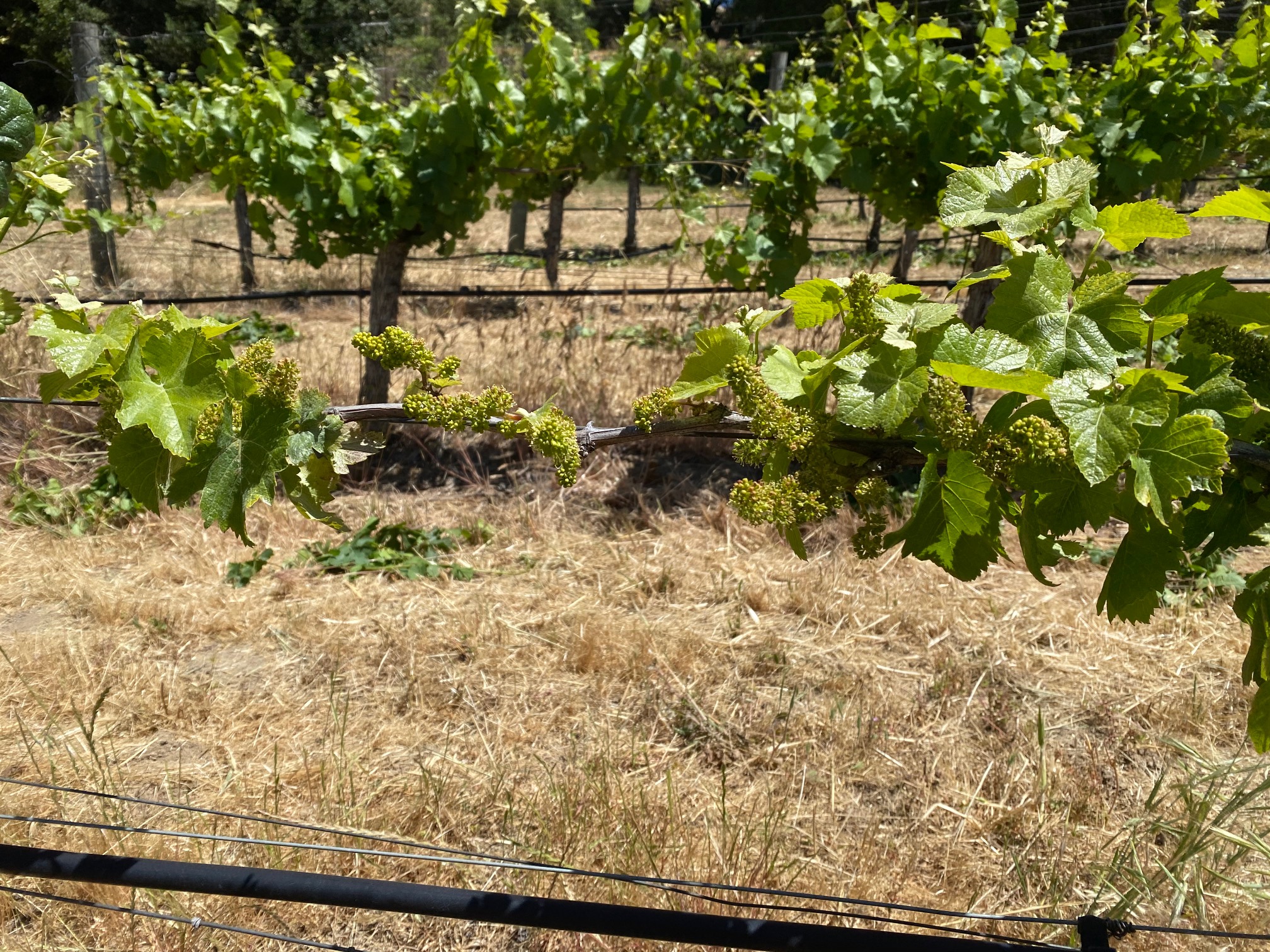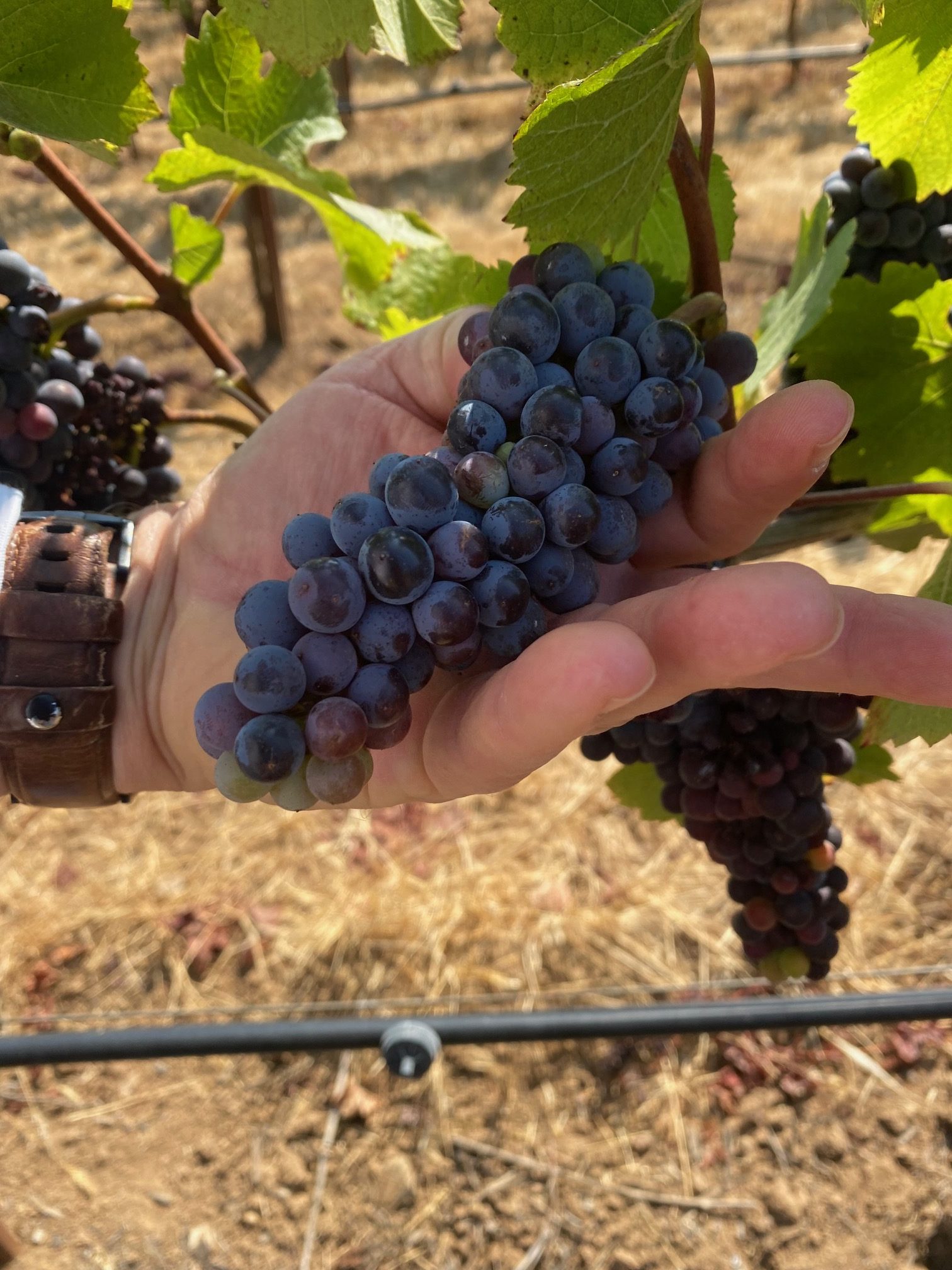Why was yield low this year?
All over California, tonnage came up shy
Not to state the obvious…
There are a lot of factors contributing to the low yield this year. Let’s address the most glaringly obvious one: things got hot. September temperatures reached over 105° in many parts of the state and stayed that way for a week. Many places got even hotter than that. These hot and dry conditions are great for producing raisins, and unless you had a huge canopy protecting your vines or plenty of water to keep microsprinklers going, your grapes just dehydrated.
We’ve discussed in past posts how little irrigation can do to combat this kind of heat stress. After veraison, the berries are pretty much cut off from the xylem (the vascular tissue that carries water up from the roots), so laying on the water isn’t going to do much. It can help keep the canopy active, but temperatures above 105° (40.5°C) can damage cells and denature enzymes. This includes enzymes vital to flavor development and ripening.
Many growers in the North Coast at least heard echoes of 2017 which saw an apparent interruption of maturation. If your vines can’t load sugar anymore, you’re going to come up short in terms of weight. Quality isn’t going to be stellar either.

Looking back further
The other reason yields are low is the annoying one: the drought. More importantly how the drought affected canopy growth in Spring of 2021. Vines are a weird plant in that the bud fruitfulness is determined in the spring of the previous year. Last year (2021) we had horrendous problems here on the North Coast because farmers didn’t think they needed to water early in the growing season. The results were stunted canopies that remained uneven all the way through harvest.
The lack of rainfall also meant nutrient deficiencies, mostly in terms of nitrogen and potassium. These nutrients are available in the top 18” of soil but plants take them up with water. No water, no nutrients. Even if you did irrigate early in the season, vines are used to having access to a lot more soil thanks to rainfall. Irrigation only covers a small area under the emitter, so farmers still needed to give vines a dollop of fertilizer to get a decent canopy going. Few did.
This year (2022) many farmers learned from their mistakes. The rainy fall meant there was more water available for irrigation. However, vine fruitfulness was already determined the year prior. That’s the bummer thing about agriculture. Mistakes follow you for a long time.

Things got cold too…
With warm springs becoming a regular occurrence, frost season is getting longer. This year was particularly deadly throughout the West Coast. Vines have compound buds, made up of two to three potential shoots. The first bud to start growing is your primary bud and that’s what gets smoked by a frost. If vines did manage to recover and produce a crop, it was via their secondary and tertiary buds, both of which are typically less fruitful than the primary.
Down for the count
Yield estimation is hard. You pick a few vines to represent what you’re going to get from an entire block. The more variability you have, the more likely you are to be off. Between the frost and uneven growth carried over from last year, you probably had a lot more variability than previously. That and most people who are doing the counting fail to consider vines affected by virus and trunk disease.
Some things remain a mystery…
Cluster weight was also low this year with very little growth between lag phase cluster weights and harvest weights. We’re not sure why this happened. My hunch is that the same high temperatures that messed with sugar loading and flavor development also hindered berry expansion. However, things didn’t get insanely hot until later in the season. Mark’s theory is that the vapor pressure deficit was high leading to more water leaving the grape berries via transpiration. I guess we all have some learning to do.
At least nothing caught on fire this year.

